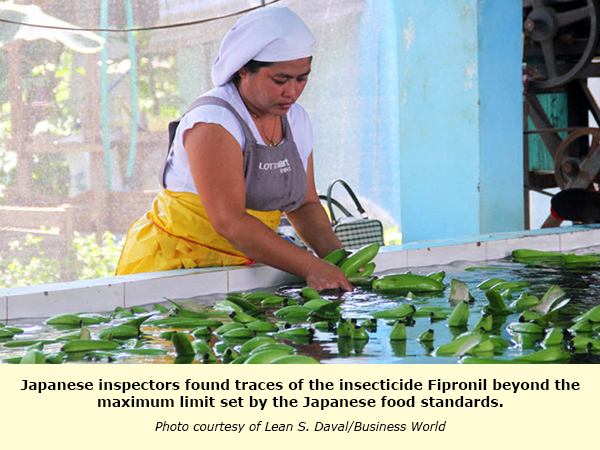The Department of Agriculture (DA) hopes to meet with the Japanese government to seek an easing of its 100% testing regime for Philippine banana imports, after inspectors found unacceptable levels of chemical residue in one shipment last year.
“We are meeting with banana sector leaders in Davao tonight,” Mr. Piñol.

In a social media post on Saturday, Mr. Piñol said that he will deal with the request made by the Pilipino Banana Growers and Exporters Association, Inc. (PBGEA) to intervene with the Japanese government to expedite the entry of bananas from the Philippines.
PBGEA sought DA’s assistance in convincing the Japanese government to accept Philippine reassurances of compliance with its residue testing requirements to scale back the 100% testing regime imposed in August to one that tests samples.
Japanese inspectors found traces of the insecticide Fipronil beyond the maximum limit set by the Japanese food safety standards.
The association’s members export 50% of their harvest to Japan.
PBGEA said the testing regime could hurt Philippine exports particularly during Golden Week in Japan, which runs between April 28 and May 6, when many inspectors could be on holiday.
“Mr. Secretary, may we ask for your personal intercession in addressing the issue of MRL (maximum residue limit) of Philippine bananas exported to Japan. May we ask you to please lead a delegation to Japan to settle this issue which if not addresses will affect our exports especially during the start of the Golden Week Holiday which starts April 26. Your presence will surely make a big difference,” Stephen Antig, executive director of PBGEA said in a letter to the DA.
Mr. Piñol said that he will present to the Japanese officials the new standards and processes implemented on the Philippine side to ensure MRL norms are not breached.
Undersecretary for Operations Ariel T. Cayanan said that he will be consulting PBGEA to determine how to ”comply with Japan and each and every country.”
“My suggestion then to the PBGEA is that there are [spraying] practices that are available [that comply with Japanese standards],” he said, adding that alternatives are available but some planters will try to get by with the banned methods.
Mr. Cayanan was speaking Sunday at an event in Manila.
According to Philippine Statistics Authority (PSA) data for the fourth quarter, banana production rose 0.6% year-on-year to 2.42 million metric tons (MMT). Davao Region accounted for 37.3% of the total or 904,130 metric tons (MT). This was followed by Northern Mindanao at 20.3% or 492,250 MT, while South Cotabato, Cotabato, Sultan Kudarat, Sarangani, General Santos (Soccsksargen) accounted for 13.8% or 335,110 MT.
Of the variants, Cavendish, the main export variety, accounted for 51.9% of output, while Saba, mainly a cooking banana, and Lakatan, an important eating variety for the domestic market, accounted for 27.6% and 20.5%, respectively.
